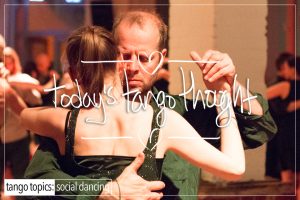Like knows like.
Talent knows talent.
Skill recognizes skill.
The reverse can not be said of the unskilled recognizing the skilled. Not quite in the same way.
Certainly people recognize the intricate, and the execution. But generally they do not and can not recognize: 1.) the economy of movement. 2.) the ease of the embrace. 3.) the seemingly effortless skill. 4.) the fluidity and ‘smoothness’ that is hard fought, honed, and practiced.
Why ?
Because it’s a level of deftness that is unknown to them. It’s akin to the difference between a Zinfandel, a Pinot, and Pinot from a specific year. You know they’re all wines but your pallet is not properly trained to distinguish the differences between them. You must be trained to taste them, or from a tango perspective, trained to feel these things. ![]()
To be fair, and clear, this stuff is not going to happen immediately, and most certainly not overnight. Simply because you watch a video on X, will you be able to then immediately dance ‘X’. That is magical thinking. Tango doesn’t work like that. Tango takes time, patience, practice, diligence to develop. And in specific the awareness of these things takes time for you to be able to a.) identify certain things by looking at it. and b.) by experiencing it in it’s myriad of different forms. Only then can you approach “like, talent, and skill”.











